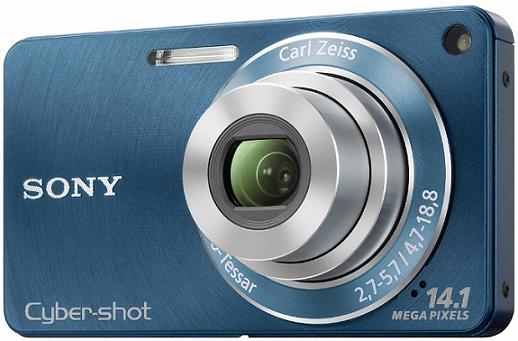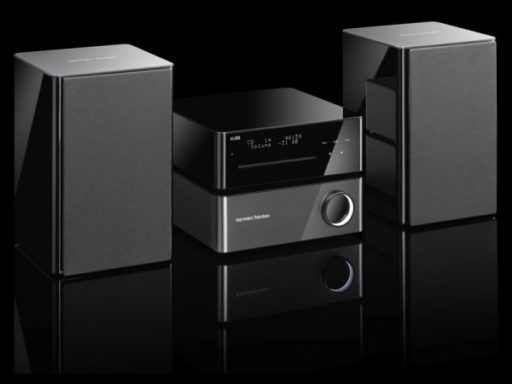Sony Cybershot W370 is nice camera with 14.1 megapixels,7x optical zoom,34mm Sony lens,3-inch LCD display,720p HD video mode,Optical image stabilization and many more….
The Sony Cybershot W370 is the high-end installation in Sony’s popular Cybershot W-series. Like the slew of other 14-megapixel shooters. I had reservations about cramming another couple million pixels onto a sensor no larger than what other digital cameras have had in the past, while retaining clear image quality at the most sensitive settings. But the image quality is quite good, and the impressive specs and extra features make the W370 feel like a complete package, more than just a casual snapshooter.
The W370 sports a 7x optical zoom range, with a 34-238mm equivalent lens and an aperture range from 3.6-5.6, as well as the ability to record 720p video. Like all Cybershots this year, it also supports SD and SDHC memory cards in addition to Memory Stick, a most welcome change to Sony’s long-running Memory Stick exclusivity
When you first pick up the W370 the first thing you might notice in comparison with other Sony, Nikon and Canon offerings is the weight. It’s not heavy by any means, but it feels like it has a bit of heft, and is more comfortable in-hand because of it.
As the replacement, more or less, for the Sony W290, there haven’t been many changes cosmetically. If you own or have seen a Sony from last generation’s line (such as the W220, W230 or the aforementioned W290) then the W370 should look and feel very familiar, as Sony hasn’t changed the overall look to any stunning degree. It still fits rather easily into the pocket of a loose pair of jeans and is about the size of a deck of cards
The user interface makes use of the now-classic rear thumb wheel from previous Sony models, allowing quick access to the camera’s six modes: Movie, Panorama Sweep, Program Auto, Intelligent Auto, Easy, and Scene. Overall, the interface appears to be pretty similar to past generations of Cybershot cameras.
In what will certainly be the most popular shooting mode among most users, Easy mode lives up to its name by paring down the display and menu options to the bare essentials, like Canon’s Smart Auto mode. In Easy mode, the LCD displays only the number of remaining shots the memory card can hold, the battery life, and whether the flash or timer are set to fire. The menu options are restricted to just two items: Image size (separated as “Large” and “Small” with an explanation of what size prints each option will produce) and whether the flash will be set to “Auto” or off completely.
The various smile and face detection modes work very well, with settings for focusing on kids’ faces, shooting only when a large or small smile is detected (as selectable by the user), or triggering a two-second timer when a new face enters the frame.
The W370 does struggle with focus in low light, especially when zoomed in, though it does support a “dual” shot when it detects such a scene in iAuto. In this mode, it takes a second shot to try and catch the scene with less motion blur. Still, in low-contrast situations where there’s not a lot of light and no face for the camera to rely on, focus hunting is obvious and a little frustrating at times, though that’s not uncommon for point-and-shoots.
As you can see in this ISO level comparison to the left (click to enlarge), the W370 and its 1/2.33-inch sensor do a serviceable job of keeping noise at a reasonable level up to ISO 800 speeds up to and including 800, though the camera does support ISO 1600 and 3200 (in single-shot mode). Like just about every point-and-shoot camera, going beyond an ISO of 800 isn’t really recommended if you want clean, printable images as degradation is typically obvious at those levels. I should also note that while noise is apparent in these 100 percent crops at lower ISO levels, you’re unlikely to notice much when those images up to ISO 400 or 800 are sized-down or printed out.
Many cameras in the market today allow the ability to shoot panoramic images, though few make it as easy as Sony’s “press and sweep” system. First seen in the Sony HX1 and last generation in the TX1, the sweep mode allows the user to simply rotate the camera while holding down the shutter button to take one single panoramic image. Many other cameras instead ghost the previous image over the LCD at about 50 percent opacity and allow the user to line up the second shot to produce a stitched together image. While both methods work, the sweep mode in the Sony is unquestionably easier, though it’s best used for landscapes where certain angles look less wonky.
The movie function also received a bit of an upgrade from the last generation of the Cybershot W-series. Movie quality is satisfactory for the price point. Optical zoom is supported, though the mechanical movement of the lens can be heard when the zoom is used during recording. Like the generation before, the W370 can record in 720p HD, either Fine (9 MB/second) or Standard (6 MB/second), as well as VGA quality. There’s a mini-HDMI output, so it hooks up to an HDTV if desired. utilizing the though The cable is not supplied, though it uses the mini-HDMI cables packaged with most consumer high-def camcorders. Audio quality was quite good as well, as you can hear in our test video below. The camera picked up good ambient sounds like birds singing while only picking up minimal wind noise.
Like any point-and-shoot worth its salt, the W370 makes digital photography simple and painless if you want it to be, and shoots some fine photos. Add up the extras like the press and sweep panoramas and optical zoom in the HD video mode, to name a few, the Sony Cybershot W370 should impress just about anybody who comes across it.
Key features:
1.14.1 megapixels.
2.7x optical zoom.
3.34mm Sony lens.
4.3-inch LCD display.
5.720p HD video mode.
6.Optical image stabilization.
7.243 degree “press and sweep” panoramic mode.
8.Several auto/preset-scene modes.
9.Captures to Memory Stick Duo/Memory Stick PRO Duo/Memory Stick PRO-HG Duo/SD/SDHC memory cards.
10.Lithium ion battery.
Resources :digitalcamera-hq.com







Pingback: low fat diet